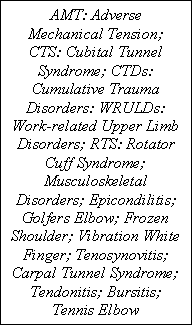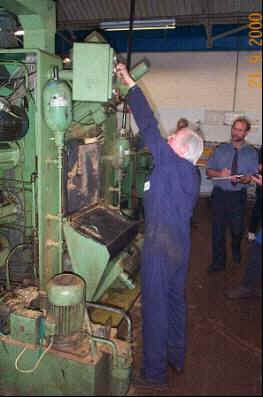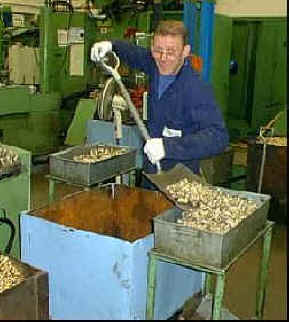|
This was the result of a
few hours effort. Clearly, full-time jobs inflicting such injury would be
untenable, yet there are many other jobs which have similar effects which
make take longer to manifest themselves – and often longer to heal.
Injuries
are caused by a combination of:
- Posture
- Force
- Duration
- Repetition
In my case, force and
repetition were the main factors. In contrast, someone spending all day at
a computer workstation, had best beware posture and duration.
As an indication of the
influence of posture on overall well-being, consider the case of Liverpool
midfielder Steven Gerrard. He had been sidelined by groin and back
injuries, but has displayed an astonishing improvement since having his
wisdom teeth removed. Chiropracter Jonathan Howett commented, “If your
teeth are not aligned it gives you an unbalanced bite, which in turn
destabilises the skull and the head posture. This unbalances the spine and
pelvic posture and makes the muscles pull in awkward directions. All
bodily movements become out of sync and this creates a risk of muscular
strain.”
According to the
H&SE, reported work-related illnesses & injuries increased by 122% over
five years, with stress and musculoskeletal disorders (such as back pain
and RSI) being mainly responsible for this increase. It is estimated that
1.2 million UK employees suffer from work-related musculoskeletal
disorders, incurring 119 million days lost at an estimated cost of £5
billion. In addition to the obvious losses in productivity, there are
costs of re-training, the cost of state benefits and the costs to the
health service, and the number of disability claims has been steadily
rising over the past ten years.
Much
of this can be prevented. In simple terms:
- Poor
posture?
Design ergonomic work stations
- Excessive
force?
Review product design; get
the right tools for the job
- Excessive
duration? Consider
power tools
- Repetition?
Rotate jobs
I borrowed a pick and
shovel to complete my pond: a more appropriate tool to loosen the earth,
and some job rotation whilst shifting it!
In order to avoid the
risk of RSI in the workplace it is best to conduct a Risk Assessment to
spot potential hazards before injury is caused. This scrutiny has the
added benefit of highlighting effort wasted in stretching, bending,
squinting, and so on, as well as re-orienting and handling tools and
materials which are not well-presented. Its easy enough to tell people to
take a break if they are subject to risk factors, but correcting these
problems to create a more comfortable and productive workplace reaps
benefits for employees and employers alike.
Please us the
‘contact’ form for details of Risk Assessment and Easy Working
programmes. |



